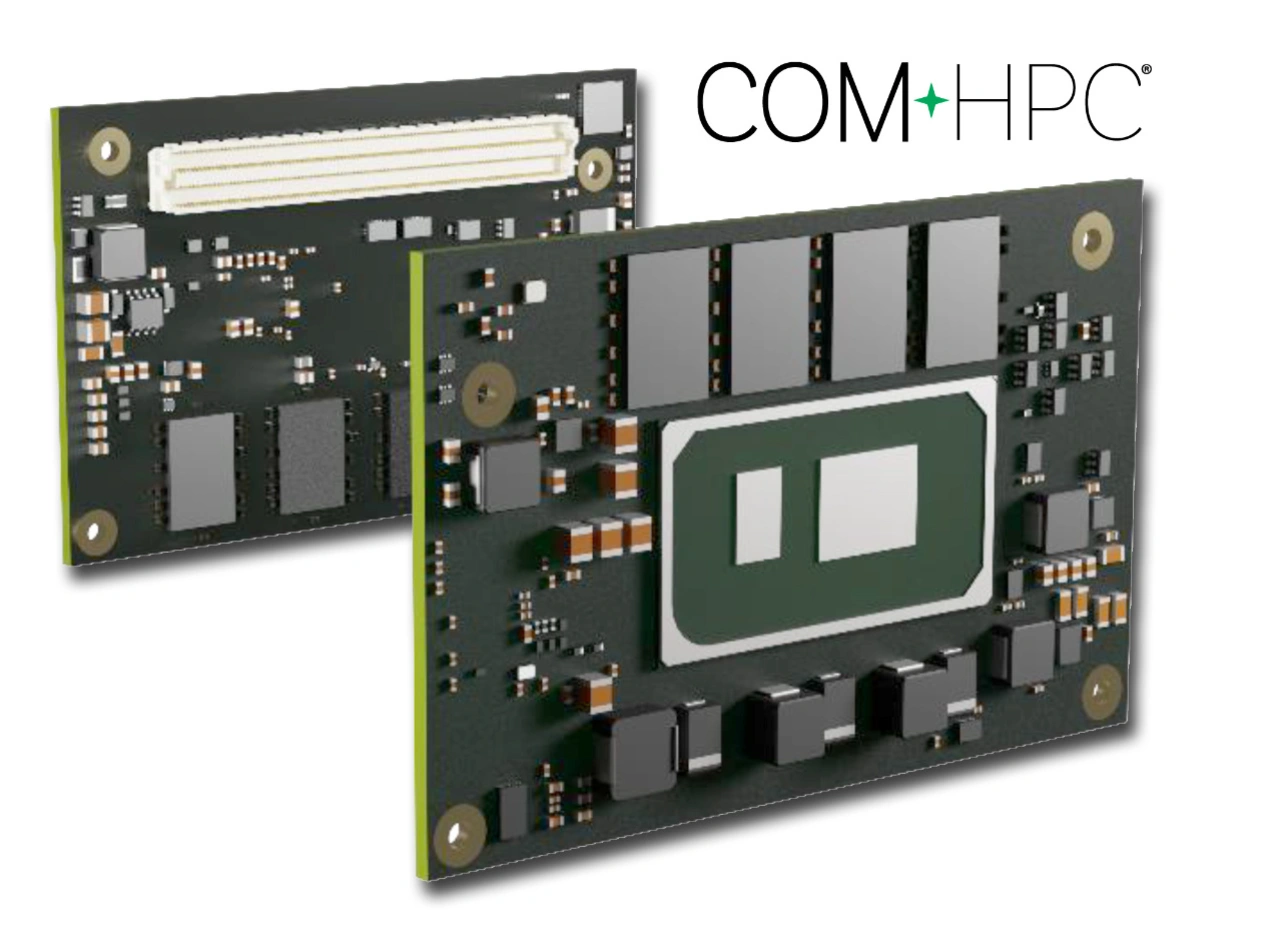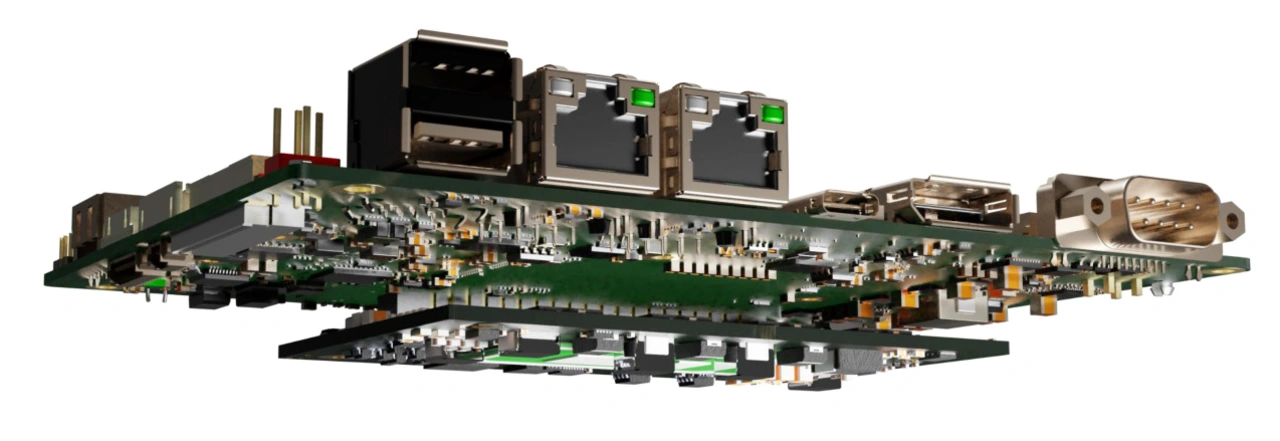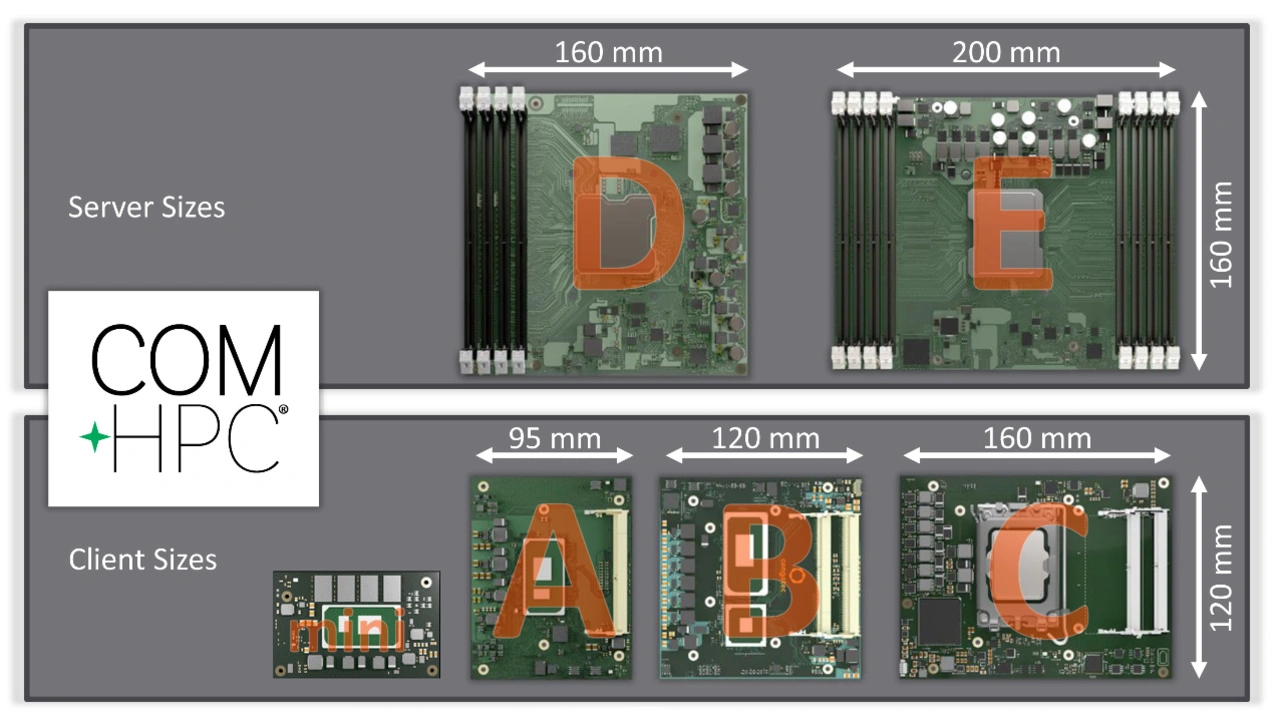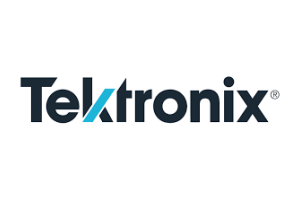PICMG extends COM-HPC application areas
FuSa extensions and credit card-sized modules
The PCI Industrial Computer Manufacturers Group has introduced two new specifications for the high-end Computer-on-Module standard COM-HPC (high-performance computing). They target mixed critical-functional safety applications as well as small form-factor designs requiring credit card sized modules.
Following the standard set by COM Express Mini, the new COM-HPC Client Mini specification that will become available soon, calls for the use of just one connector instead of two, as is the case for the next larger sized modules. However, the COM-HPC with, half the number of signal pins still offers 400 signal lanes, equal to 90 % of the capacity of a fully-fledged COM Express Type 6 module.
Compared to the COM-HPC Client Size A module, which was the smallest COM-HPC form factor available up until now, the COM-HPC Mini reduces the footprint by 50 %. Such extremely small modules are required for high-end embedded computer logic in devices such as top-hat rail PCs for control cabinets in building and industrial automation, or for portable test and measurement devices.

The new specification will enable designers to integrate state-of-the-art interface technologies such as PCIe Gen4 and Gen5 into ultra-small, processing units. As the new specification will come with a focused high-performance pinout and will be compliant with the entire COM-HPC ecosystem, it is expected to become the new high-end standard and to extend the PICMG‘s existing COM Express Mini standard. COM Express Mini customers have already registered interest which means that the first modules are likely to be launched soon after the specification is completed.
PICMG expects the COM Express specification to continue leading the COM market for many years as it meets numerous standard applications requirements soon to be allocated in the mid-range performance sector.

Safe COM-HPC
The new functional safety (FuSa) extensions target a growing market: Connected device developers wanting to utilize x86 processor technologies will now be able to execute mixed-critical applications on multi-core processors. This calls for redundancy and the possibility to implement fail-safe processes. With the new functional safety extensions, COM-HPC is thus entering a market that is expected to significantly stimulate the demand for embedded Computer-on-Modules.

In addition to functional safety control applications that require an IoT and industry 4.0 gateway, it also targets Cobots (collaborative robots) that work closely with humans.
Further market opportunities include automated intralogistics with autonomous logistics vehicles and range from factory mobility to new markets in autonomous driving, including agricultural and construction machinery and extend to smart city vehicles and AUVs as well as UAVs. The new functional safety extensions are supported across all COM-HPC form factors, including the up-coming COM-HPC Client Mini.





